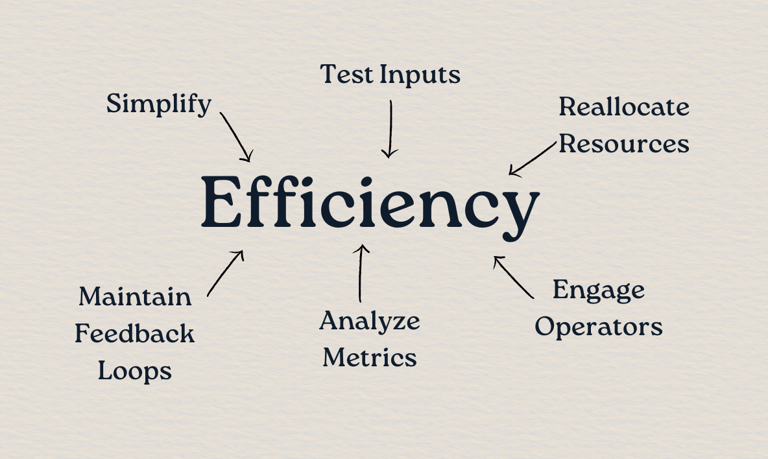STREAM Your Way to Process Efficiency
OPERATIONAL EXCELLENCEFEATURED


What if the inefficiencies holding your business back aren’t just about outdated tools or slow systems but the way your processes are designed? That’s where the STREAM framework comes in. Designed to simplify, refine, and energize your processes, STREAM tackles inefficiency at its core and sets your business up for sustainable success. Ready to rethink how your workflows operate? Let’s dive in.
Efficiency lies at the heart of every successful business. Whether it’s delivering a product faster, reducing costs, or improving customer experiences, efficient processes are the key to staying competitive.
However, inefficiency is more common than we’d like to admit. It shows up in the form of delayed workflows, redundant tasks, and unclear roles—all of which drain resources and impact outcomes. While advanced tools and technologies can help, they’re only effective when paired with a clear understanding of the root causes of inefficiency.
This is where a structured approach comes in. STREAM is a model I’ve developed to address inefficiencies by focusing on simplicity, quality, and continuous improvement. Let’s explore why process efficiency matters and how a fresh perspective can help you achieve it.
Why Inefficiency Happens
Many businesses face inefficiencies for reasons that are surprisingly easy to overlook:
Unnecessary Complexity: Over time, processes grow unwieldy, with extra steps and approvals added without much thought.
Poor Quality Inputs: Flawed data, insufficient resources, or unclear instructions lead to suboptimal results.
Misaligned Teams: Teams often lack the training or alignment needed to work cohesively.
These issues may seem small on their own, but they snowball into significant roadblocks when left unchecked. The good news? With a structured approach, they’re entirely fixable.
A Framework for Process Efficiency
The STREAM framework provides a practical way to address inefficiencies. It’s not about using a specific tool or methodology—it’s about rethinking how your processes work and making thoughtful changes to improve them.
Here’s a brief overview:
S – Simplify : Complexity is often the enemy of efficiency. The first step is to break down processes into their core components. By identifying unnecessary steps and eliminating redundancies, you can create workflows that are straightforward and focused.
T – Test Inputs : Every process relies on inputs, whether they’re materials, data, or information. The quality and quantity of these inputs directly affect the process outcome. STREAM emphasizes assessing and optimizing inputs before diving into the process itself.
R – Reallocate Resources : Efficiency isn’t just about simplifying workflows—it’s about ensuring your people, tools, time, and budgets are being used effectively. By reallocating resources, STREAM helps balance workloads, reduce bottlenecks, and focus efforts on high-impact activities.
E – Engage Operators : Processes don’t run themselves—people and systems do. Ensuring that operators (whether human or technological) are well-trained, informed, and aligned is critical. STREAM encourages active engagement and collaboration to maximize efficiency.
A – Analyze Metrics : You can’t improve what you don’t measure. Metrics like cycle time, throughput, and error rates provide valuable insights into how your processes are performing. STREAM advocates for tracking these indicators to identify improvement opportunities.
M – Maintain Feedback Loops : Efficiency isn’t a one-time achievement—it’s a continuous journey. Feedback loops allow processes to adapt and evolve based on changing needs and real-time data. This step ensures your processes stay efficient over time.
Each component is designed to work together, providing a holistic approach to efficiency that adapts to your business’s unique needs.
Take the Next Step
While the STREAM framework provides a starting point for tackling inefficiency, true success comes from continuous learning and adaptation. Businesses that succeed are those that constantly ask, "How can we do this better?"
If you’re interested in learning more about the STREAM model and how it can apply to your business, I’ve created an exclusive resource packed with practical insights and tips. Sign up below to receive the free guide directly to your inbox!
